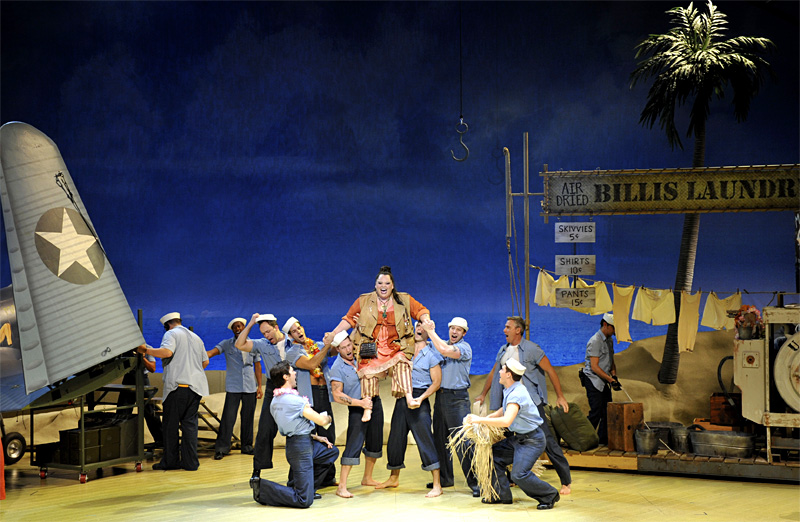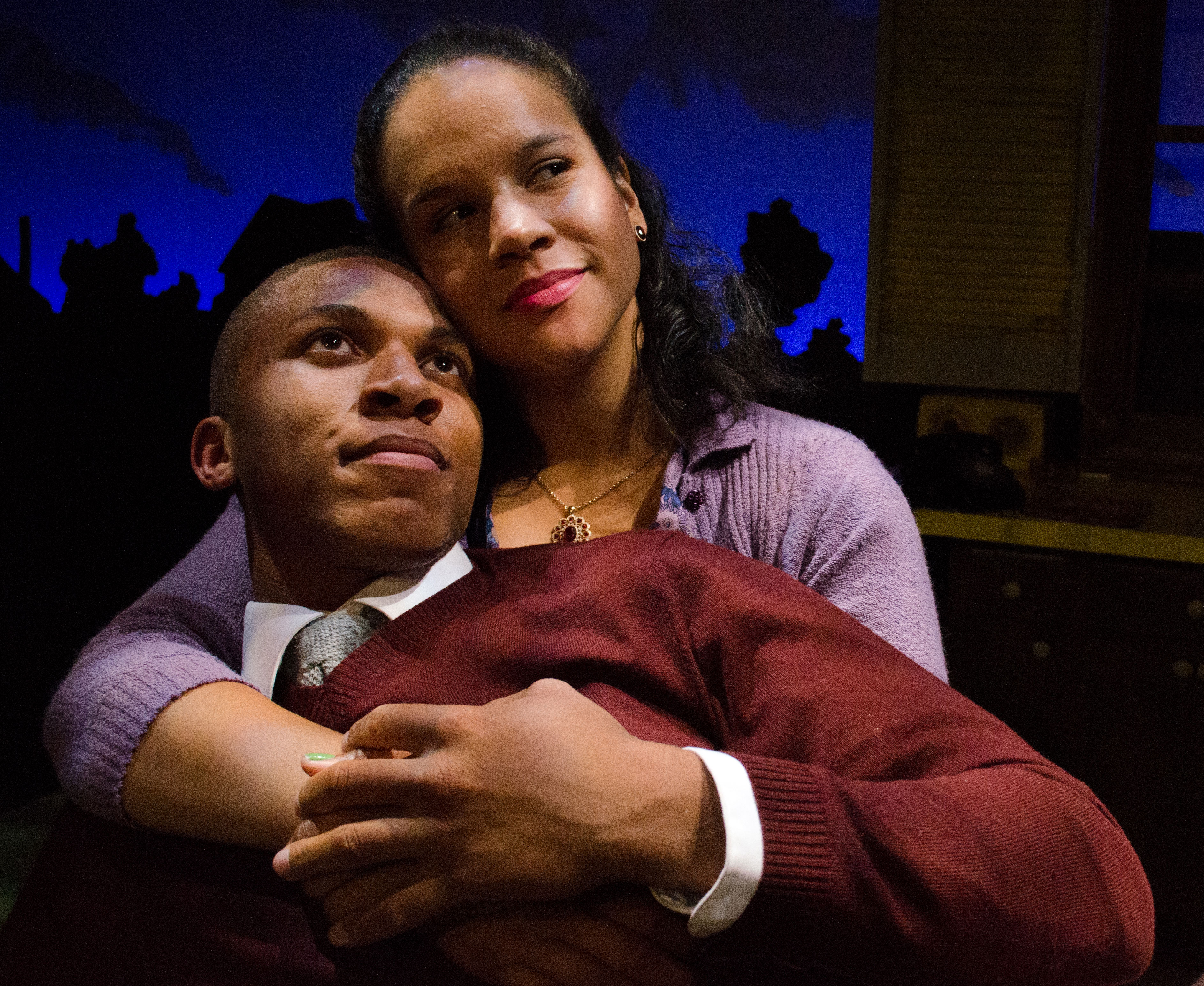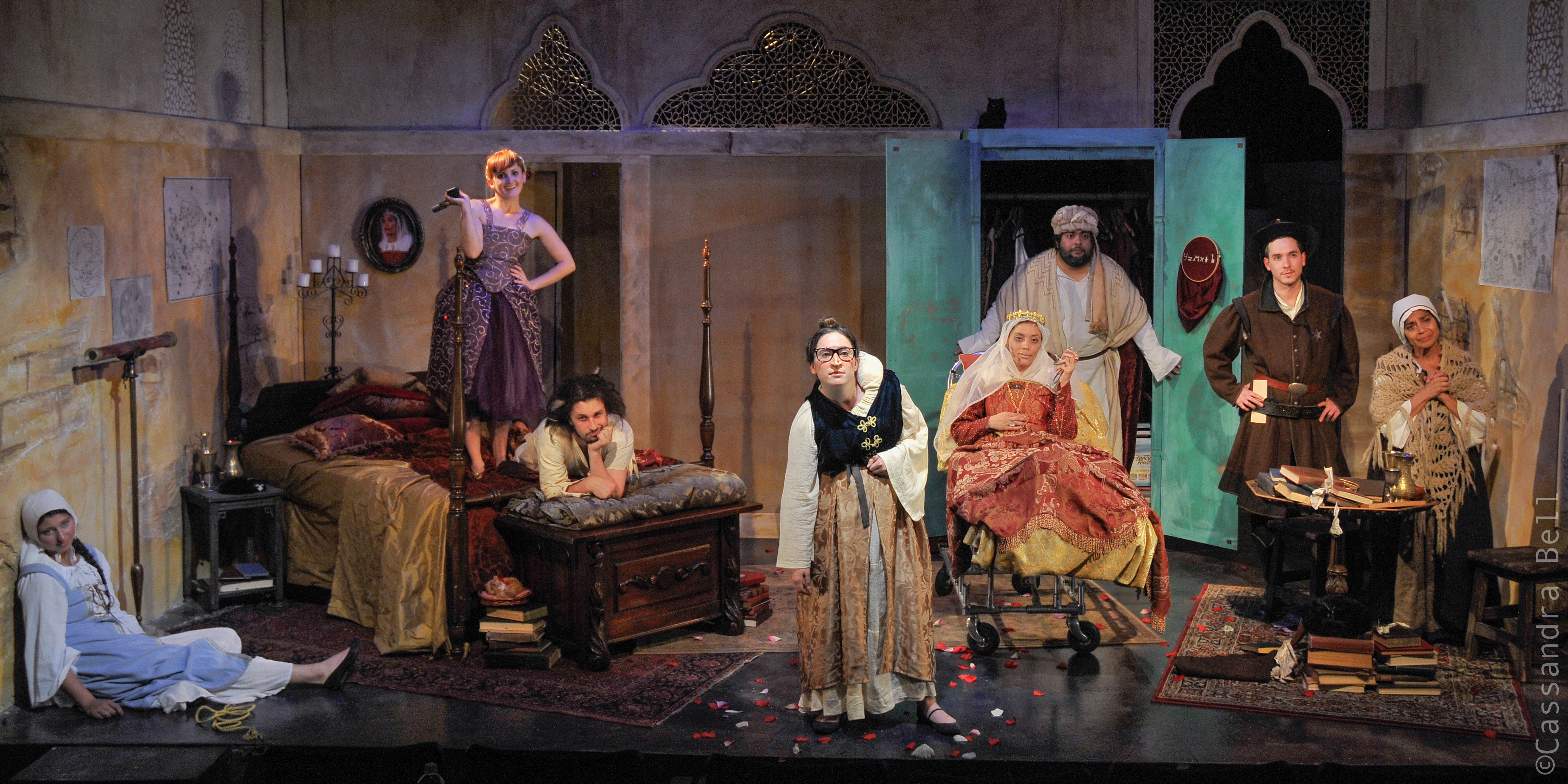Talk about Happy Talk. The production of South Pacific now moored at the 5th Avenue—a touring version of the 2008 Tony-winning Broadway revival—has been touted as a second coming for its Seattle expat director, Bartlett Sher. (In December, Sher stepped down as artistic director after a decade at Intiman.)
In truth, this re-imagining is 99.9 percent sublime. The singers soar, the sets glide by like a three–mai tai reverie, the dancers appear immune to gravity, and the score’s seductive lure to South Seas adventure remains undiminished. The weakness of the remaining .1 percent is due to some stubbornly antiquated material (Rodgers and Hammerstein’s classic dates from 1949) and a plot that seems more fairy tale than war story.
Small matter, since this stuff is as familiar as drizzle to Seattle theatergoers. Not only is it based on James Michener’s Tales of the South Pacific, it’s crammed to the rafters with memorable tunes—”Some Enchanted Evening,” “Bali Ha’i,” and “I’m Gonna Wash That Man Right Outa My Hair,” just for starters. A few opening-night attendees joked that the show has been seen locally (in a Paramount tour featuring Robert Goulet and stagings by both Civic Light Opera and the Village Theatre, in addition to a popular PBS concert performance starring Reba McEntire) more often than Sher himself, who relocated to New York some time ago.
Sher’s real achievement here is not in innovation, but in restoration. Like the Disney craftsmen who digitally cleaned every hand-painted cel of Fantasia and Snow White until they sparkled better than new, Sher has brought South Pacific out of dry dock fresh and gleaming. Since the show is already a curio of a bygone era, Sher elects to celebrate rather than update. It’sthe smart move.
Yes, Christopher Gattelli’s staging nods to the advances that 60 years of choreography have wrought, but this is not So You Think You Can Dance with a World War II theme. Rather than threaten the piece’s mood,Gattelli moves his players stealthily throughout. The tropical pieces sway like an island breeze, and the Navy ensemble numbers—especially “There Is Nothing Like a Dame”—crackle with pent-up sexual frustration.
There’s also considerable visual restraint in evidence, as Michael Yeargan and Donald Holder carefully tweak their sets and lights to capture those sensual touchstones that make this musical memorable.
Of course,South Pacific is nothing without the star-crossed love story at its core. As the show opens, Emile (Rod Gilfry) and his mixed-race children serenade one another; clearly this is a fellow who misses his late wife and longs for a lady who’ll raise her kids by his side. Enter Ensign Nellie Forbush (Carmen Cusack), who’s stranded on this remote island just waiting for World War II to call her into action. Instantly she’s smitten, and only later, when she discovers his multiculti offspring, is she torn between her racist Arkansas roots and the exotic future that beckons ahead. Once Lt. Joseph Cable (Anderson Davis) brings both a mission and war in the Pacific to the island, all the gears of this romantic morality play churn into action.
Sher approaches Rodgers’ score and Hammerstein’s book with the reverence of a pilgrim seeking counsel at Delphi. Gilfry’s Emile has the vibrato of a purring Ferrari and enough continental bearing to sell cans of Manwich to the French. Cusack’s Nellie, by contrast, is a Southern sugarplum who fills the air with magnolia blossoms and simmering grits every time she clears her throat. As a pair, they’re oddly perfect.
The supporting players (with two glaring exceptions) appear out of central casting, but as always, South Pacific offers a pair of opportunities to shine within the ensemble. Keala Settle is Bloody Mary, the tribal yenta with the hypnotic voice. At first glance, she’s all about free enterprise—selling grass skirts and shrunken heads to the encamped Americans. But what seems to be her sideline as a madam turns out to be something else entirely as she tries to find a white husband for her native daughter. And Matthew Saldivar channels his inner Brooklynite into Luther Billis, the libidinous Seabee with a heart of gold. It’s a Bugs Bunny-on-testosterone role, but Saldivar manages to find some nuance without sacrificing any high spirits.
It’s easy to see why this production earned instant acclaim. Sher found a legendary show that hadn’t seen Broadway lights in 45 years, and decided there wasn’t much wrong with it. Many fans of the musical consider this the pinnacle of the form. If that’s so, then this South Pacific may well be the pride of the fleet.








